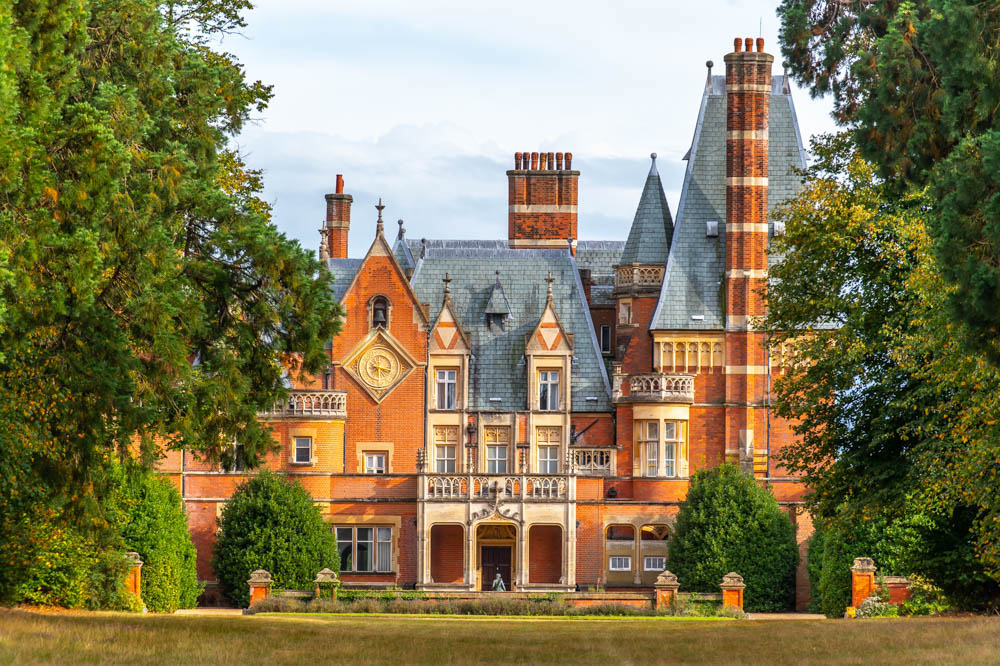
Portrait of Henry Clutton. Source: Alchetron.
Henry Clutton trained under Edward Blore and inherited many of Blore’s clients. Like Blore, Clutton was a proficient designer of Tudorbethan country houses. Clutton, however, was one of the younger, bolder generation of architects and — with conviction and occasional brilliance — broke out of the rather dull Bloreian tradition in which he had been trained. His red sandstone castle at Ruthin, his early sixteenth-century chateau at Minley, his experiments with the vernacular "Old English" style and his interpretation of the Jacobean country house, show an originality of which Blore was incapable. — Penelope Hunting, “Henry Clutton’s Country Houses,” p. 96

Minley Manor now, © Anthony Wu, Minley Manor,
by kind permission.
Clutton's mastery of thirteenth-century French Gothic architecture was demonstrated in the churches he designed for poor Roman Catholic congregations. — Penelope Hunting, "Clutton, Henry....”
Henry Clutton (1819-1893) chose Italian Romanesque for the cloisters at the Oratory at Birmingham in 1860 ... the style that recurred even during the triumphant progress of Gothic." — James Stevens Curl, p. 85
Biographical Material
- Clutton's obituary in the RIBA journal
- A Review of Gordon Vowles's Henry Clutton: Victorian Architect of Gothic Revival Churches and Country Houses
Works
- Church of St Francis of Assisi (R.C.), Notting Hill (with J.F. Bentley)
- Prebsytery at Holy Name of Jesus (R.C.), Chorlton-on-Medlock, Manchester
- "Minley Manor, Farnborough, Hants: The Seat of Mr. Laurence Currie" [Principal Architect: Henry Clutton (1819-1893)]
- A Note on the Later Additions to Minley Manor by George Dewey and Arthur Castings (this also references Clutton)
- Old Warden Park (Shuttleworth House)
- Extensions to the former St Mark's Teacher-Training College, Chelsea (discussed in connection with Blore)
Bibliography
Brodie, Antonia. Dictionary of British Architects 1834-1914. Vol. I (A-K). London: Continuum / RIBA, 2001.
Curl, James Stevens. Victorian Architecture. Newton Abbot: David & Charles, 1990.
Hunting, Penelope. "Clutton, Henry (1819-1893), architect." Oxford Dictionary of National Biography. Online ed. Web. 7 May 2024.
_____. “Henry Clutton’s Country Houses.” Architectural History 26 (1983): 96–180. https://doi.org/10.2307/1568439.
Vowles, Gordon. Henry Clutton: Victorian Architect of Gothic Revival Churches and Country Houses. Willington: Gostwick Press, 2022.
Created 5 May 2024